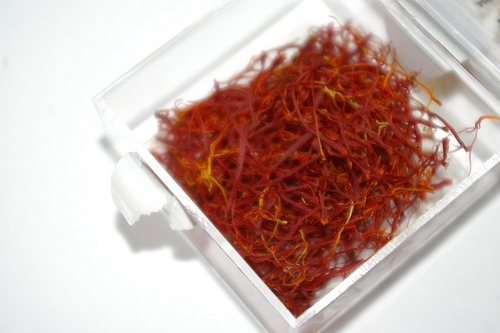One of the most adventurous things we did after marriage was to go to Kashmir for Honeymoon. Right opposite the Mangalore STP office we have Swastika Tours, a friendly operator whom we have trusted for many tours in the past. In 2008, when we approached him we had all sorts of exotic places in our mind like Maldives, Mauritius or Europe.
But with the memory of the Tsunami fresh in our minds, we quickly ruled out all islands and sea facing locations. The hill-stations and snow covered locales in the northern hemisphere remained. But it was Santosh from Swastika who planted the idea of Kashmir in our minds. In 2007, Kashmir was considered to be a dangerous place to visit, thanks to the media reports of fresh gun fires or terrorist attacks. We were hesitant. “Why not?”, he asked, “My sister just visited the place and she liked it better than her Switzerland trip. It is completely safe these days.” We looked at each other silently. We both knew that we were up for the challenge.
The one week Kashmir trip indeed turned out to be one of the best trips we have ever had. It was a land completely different from South India both in terms of people or weather. But one of the most memorable incidents involve the purchase of the much coveted spice found in Kashmir - Kesar or Saffron.
Until we reached Kashmir I had no idea what Kesar was. I came to know from the locals that Kesar is an extremely rare and expensive spice that has many Ayurvedic properties like making you fairer. In fact, they claim that Kesar is the secret behind a Kashmiri’s fairness. It was hard to disprove that claim since they mixed Kesar in almost every dish like a regular spice , even in a specially brewed tea called Kahwah . Both of us became big fans of delicious Kahwah and used to have it whenever we could.
So very soon, it was obvious that the must-have souvenirs to bring from Kashmir was a small stash of Kesar. Now, we were staying on a house boat in Dal lake. By evening, as they took us for a boat ride in a Shikara around the lake we used to find goods of every kind being sold by vendors on boats. You can find boats carrying milk, vegetables, fresh flowers, shawls, handicraft items and of course, Kesar.
Every day our Shikara used to change and one day it was an old man who used to affectionately call me Beta (son). Since, I managed to converse in broken Urdu (thanks to Bollywood movies), we got to know each other quite well. During our ride, a Kesar vendor approached us offering Kesar in various grades and quantities. We hesitated but the old man said that he knew the person well and you would anyways buy some so it might as well be from him. The seller showed us various grades of Kesar held in small clear plastic boxes. They looked authentic and had a lovely aroma. We bought two small boxes of the best grade he had for about two thousand rupees. The old man carried an affable smile all the time and went about extolling the virtues of Kesar.

The next day, our driver suggested that we visit a Kesar farm. Kesar blooms only in one month in an entire year. Fortunately for us, we were in the right time of the year and saw fields filled with rows of violet flowers barely above the ground. There was a small shop right in front of the farm. A very old man with an overflowing white beard sat behind a desk. He enquired if we are interested in buying some Kesar. I politely declined saying that we had already bought some from a Shikara.
The moment I said that, the old man and my driver exchanged worried looks. It was as if I did something really wrong. The old man requested if he can see some of the Kesar I’d bought. I looked at the driver and he nodded affirmatively. Fortunately I was carrying the small plastic boxes in my pocket. I handed over one of them to the old man.
He carefully opened the case and took a few stigmas out with a tweezer and gently placed them on his wooden desk. He took out a magnifying eyepiece, perched it one eye and began examining them carefully. We were all waiting with bated breath. Finally, he looked pleased and placed the eyepiece down. “Fake”, he said. I did not believe him.
“Let me prove it to you. A real dried stigma of a Kesar flower never completely dissolves in water”. He let a few drops of water fall on his desk and with tweezers hovered a stigma slightly above it. “With your permission?” I nodded. The stigma fell on the drops and began rapidly dissolving. After slight stirring, the stigma lent no more color and the water had a dull orange tinge.
He took another, nearly identical, small plastic container and proceeded to repeat the test. As the stigma fell, at first, it barely dissolved. Slowly a yellow region formed around the stigma and then it began to turn to an orangish tinge. The process took several more seconds and the color seemed keep effusing out of the stigma. The test was simple yet shocking in its effectiveness.
What was even more shocking was what he said next. “He cheated you”, he screamed. “It was a scam. He sold you colored paper and charged you by the nose. He cheated you”, he kept on saying. Since we had another day left, we decided to figure out how to recover the loss later. Meanwhile we bought some ‘genuine’ Kesar making sure that we tested it properly this time.
That night we spoke to the owner of the house boat about the incident. He too got quite agitated (we were now getting used to the temper of Kashimiris :) ). He wondered why anyone would buy anything from Shikaras since they were targetted at luring naive tourists. After he calmed down, he suggested that I speak to the old man and try to return the goods and recover the money. Making a police complaint would not be a good idea since we did not have much time left. I realised that it was probably the only sensible option left.
That evening, the old man was summoned for a ‘casual’ conversation. I boarded his Shikara alone. He started moving the boat and started his usual banter with his constant smile. After some conversation, I casually mentioned that we had a change of mind after speaking to our relatives and we wished to return the Kesar that we had bought. The old man’s expression changed. He started arguing that Kesar would last a long time and it would be good to keep it. But I was adamant that I wanted to return it and since the vendor was his friend, he would need to find him somehow.
At this point we were in a dark and secluded part of the lake. I could barely see the man’s face or guess what he was thinking. But from the way he spoke, he was clearly agitated. After much arguing, he finally agreed to speak to the vendor. He rowed to another area next to a house and left me at the boat. I waited for what seemed like eternity. I could hear some loud and vocal arguments from inside. Finally the old man came back in a hurry.
As he rowed he explained that he can only take back one container and that was the best he could convince the vendor. Since I had no expectations, this was actually a big deal. But I appeared displeased and grudgingly accepted. He took one of the containers and repaid the amount.
I felt relieved when I returned to the house boat. The old man must have realised that we fell for his sweet words. But at least we had a partial victory now. The box of fake Kesar would be a true souvenir, reminding us of Caveat Emptor!




